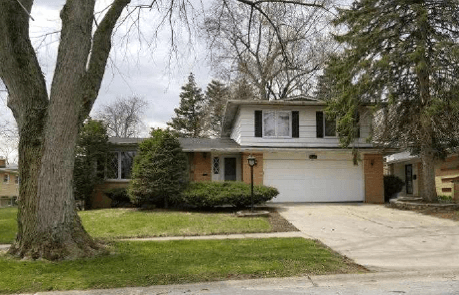Mortgage Note Case Study
See Inside Our Income Fund
LEARN HOW YOU CAN EARN 9% PASSIVELY.
About the Note
If you’re newer to Aspen Funds, I recommend that before you read this case study, be sure to look at our Income Fund page to get a better understanding of our strategy, process, and portfolio.
This case study will be a behind-the-curtain look at an actual mortgage that is owned by our income fund, Aspen Income Fund. This property is located in Glenwood, IL, in the suburbs near Lake Chicago.
This mortgage is what is commonly referred to as a Re-Performing Loan (RPL) in our industry. The borrower ran into financial challenges many years back and couldn’t keep up with the original mortgage payments. Generally, these are caused by temporary issues such as a job loss, medical crisis or divorce. However, like most borrowers, this borrower recovered financially and wanted to stay in their house, so they worked out a loan modification with their lender and started making payments again.
Here are the details on the mortgage:
1st Mortgage Balance $95,000
Home Value $132,000
Equity in Property $37,000
Loan to Value 72%
Interest Rate 5.375%
Monthly Payment $649
Aspen’s Strategy

Aspen purchased this note at a significant discount to the unpaid principal balance, or what the borrower owes us. We purchased this note for $45,835 on a mortgage where the borrower owes us $95,000. As a reminder, Aspen purchases the mortgage, not the property. As such, we become the lender and the borrower sends their monthly mortgage checks to us. The borrower is still responsible to pay property taxes, insurance, and maintenance expenses.
Aspen uses a proprietary underwriting model and we are extremely selective and conservative in the assets we acquire, purchasing only a small percentage of those evaluated. When evaluating these notes, we look at a variety of factors including the borrower’s creditworthiness. But, as you’ll see, we focus much of our underwriting on the real estate itself for capital protection.
Aspen’s Metrics:
Purchase Price of 1st Mortgage $45,835
Payoff Mortgage Balance $95,000
Discount to Payoff 52%
Effective Yield 17%
Investment to Value 34.7%
Aspen purchased this note at a 52% discount to what the borrower owes us ($45,835 versus $95,000). This does two things: 1) our effective yield, or cash on cash return, is 17%. Even though the interest rate is only 5.375%, our yield is 17% because our cost is much lower than the balance, and 2) this provides a large cushion for capital protection.
Capital Protection
When looking at capital protection, we use a metric called Investment to Value (ITV), which is our cost basis divided by the value of the property ($45,835 / $132,000 = 34.7%). Anything under 80% is good. At 34.7%, this particular note has a massive amount of capital protection.
In a worst-case scenario where the borrower stops paying his mortgage, because we have a secured lien, though it is never our first option, we have the ability to foreclose. Our investment would be significantly covered by the equity in the property, and we’d likely stand to make a large profit.
Comparable Market Rent
Another key metric we evaluate in underwriting is comparable market rent for the property. In this case, the comparable rent estimate was $1,795/mo. We look at this metric for two reasons:
- If it is more than the borrower’s mortgage payment, it creates a “stickiness” factor. If the borrower were to stop paying and had to find somewhere else to live, they would have to pay ~$1,795 per month to find a place that is similar to their current house, much more than their current payment.
- If we had to take back the property, we have an idea what we could rent the property for in that market.
Potential Capital Gains
The other advantage provided by our discount is the capital gain we get if the borrower ever refinances or sells the property. Even though we only paid $45,835 for this note, the borrower owes us $95,000. So, if the borrower ever moves or refinances, we get paid the balance of the loan. That would result in a gain of over 100%.
You can see why we get excited about this business model. It combines strong cash flow with great capital protection. And, if you invest in a note fund like ours, then your investment is spread across many different notes in different geographies. To learn more about the strategy behind investing in notes, check out our mortgage note investing guide.
If you want to learn more about our Income Fund and see several other examples of mortgages in the portfolio, be sure to watch our free deep-dive webinar.


